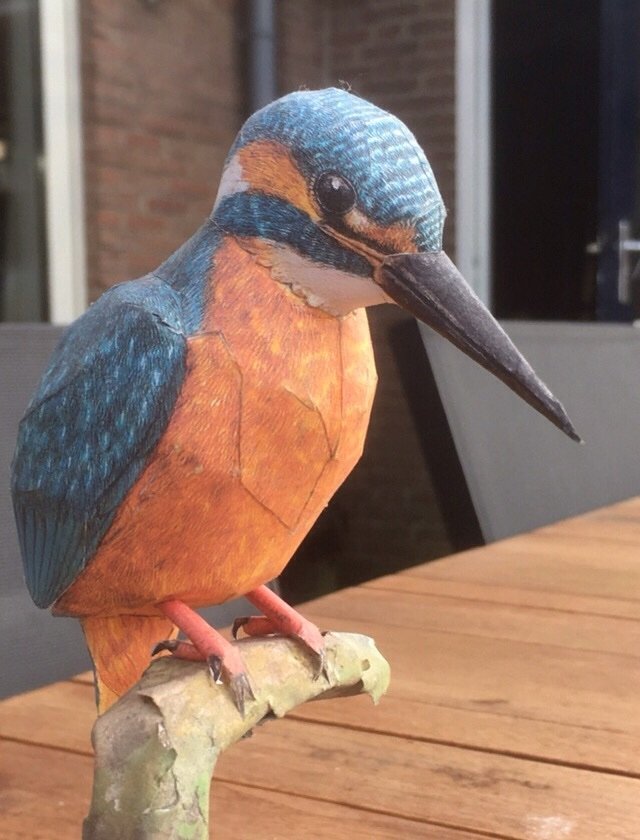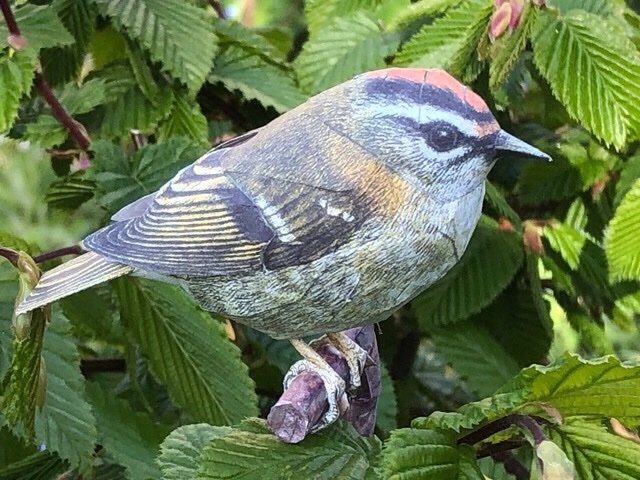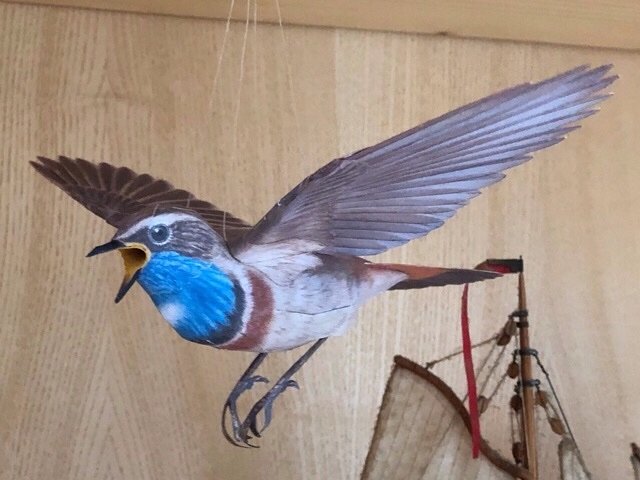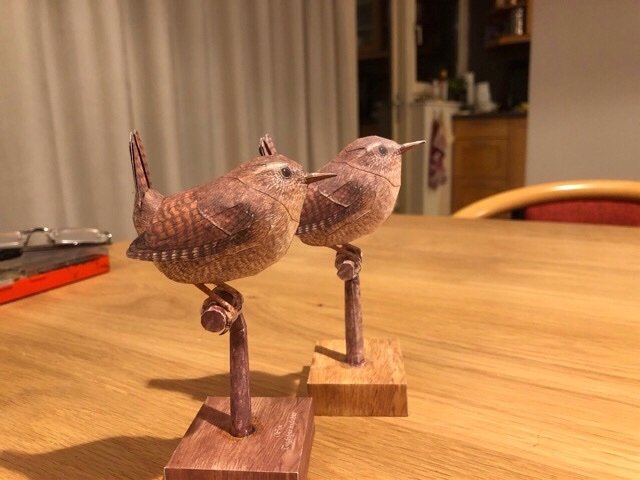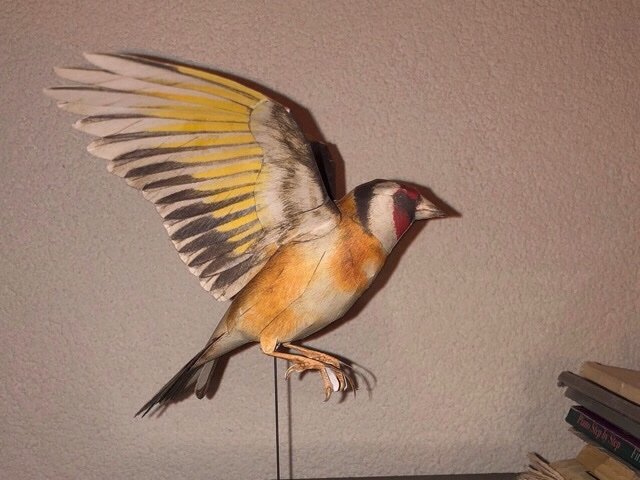-
Posts
3,515 -
Joined
-
Last visited
Content Type
Profiles
Forums
Gallery
Events
Everything posted by amateur
-
I have this one in my increasing stack of card models. The amount of very small parts lowered my initial enthousiasm, so I did not start..... Dutch navy had a couple of these ships, but none was ever used in action. They were notorious for their bad handling in choppy sees (as the North See happens to be most of the time) The Rijksmuseum has a designmodel of the ship: https://www.rijksmuseum.nl/nl/collectie/NG-MC-1239 And as far as I know there is only one pic of the original: Davids model is -timewise- somewhere between the model as designed, and the picture of her as shown: the ships were at some time modified with a machinegun platform and a searchlight platform, and repainted in a rather dull, boring grey. Jan
- 45 replies
-
- Tijger
- Paper Shipwright
-
(and 2 more)
Tagged with:
-

Macro photos with an iPhone
amateur replied to Tomculb's topic in Photographing your work. How to do this.
Another possibility is, when you point yiur camera in the direction of something, putting two fingers on th screen, and zooming in. On my Ipohone, you can get a magnification of up to 5 times. (don't know in which version this functionality was introduced.) Jan -
But for the late reply of Steven I would have missedthis one. What a nice (understatement ) lttle model this is! I like the ships of this era: you see modern times coming, but it is not really there. How did you make the flags? Just printed double sided, or...? second question: you showed two other ships you started, but I cant find the logs of those. Did I miss them, or didn't you start a log? Jan
-
Sorry, the guy doesn't give a reference. http://www.die-kartonmodellbauer.de/index.php?thread/10799-messerschmitt-bf-110-4-r8-1-33-halinski/&pageNo=3 at the end of the page. He is a rather good builder: don't know how he does it: no sloppy sides, no fibers at the edges, no glue where it does not belong, just perfect.... (and the partsize of those halinski kits is mind blowing) Jan
-
Quite a large part of this navy-collection of the Rijksmuseum is from collection of the department of the navy. That collection consists for a large part on demonstration-models, quirky designs and other experimantal stuff. Some of which made it to real life, many of which never got beyond the demonstration model. Jan
-
Actually, the deck-lay-out has very much resemblance to the schooner Hannah, as drawn by Harold Hahn. In that lay-out, the foremost deck-hole, is not a cargo-hatch, but a sky-light. The windlass is just in front of that, behind the fore mast. Again, that points in the direction of a slightly out of scale windlass, and not of something else. Jan
-
The Dutch military Museum also has this one in their collection: https://collectie.nmm.nl/nl/collectie/detail/263253/ it was a design by a rather famous Dutch admiral, Van Kinsbergen. the NMM has no documentation either. Can't see which problem is tackled by this design.... (actually, I can think of a number of new problems attached to this one, pusing this thing with a full sized gun barrel is rather cumbersome, I think) Jan
-
Be welcome! We are looking forward to your build log. (And always happy sharing knowledge and tricks) Jan
-

Jagdtiger by Jörgen - Tamiya - 1/35 - PLASTIC - Weathering
amateur replied to Jörgen's topic in Non-ship/categorised builds
Nice work! Jan -

Jagdtiger by Jörgen - Tamiya - 1/35 - PLASTIC - Weathering
amateur replied to Jörgen's topic in Non-ship/categorised builds
Please, do not use links, or desktop-copies to include pics, but the 'add files' feature of the forum. That is the way to make sureeveryone can see the pics. Jan -
I still am not sure whether I like the scalpels: the scalpels tend to flex, while the x-acto blades are quite inflexible. Is a matter of taste, I guess. Swann is redicously sharp. Jan
-

Anyone out there working on a card model?
amateur replied to gagliano1770's topic in Card and Paper Models
My cat wasn't interested: they don't move and they don't make noise. As far as my cat is concerned, they are very much like shipmodels. Jan -

Anyone out there working on a card model?
amateur replied to gagliano1770's topic in Card and Paper Models
There are some very realistic bird models around. My favorite are the birds by johan Scherft, a dutch paper artist. They are incredibly good, and yet very simple to build (much smaller than that impressive eagle shown above ) and they cost (next to) nothing. -

Hello from The Netherlands!
amateur replied to Martijn Onderwater's topic in New member Introductions
Hi Martijn, welcome to MSW. Anything you want to know on shipmodels is here on the forum (somewhere ) Any chance of pictures of your builds? Jan -
I guess he means that the ringbolts you have made so far have an eye with an inner diameter that is larger than the thickness of the ring that will go into it. I.e. you need a far smaller drill size for your ringbolts. But: using a far smaller drill will result in a ringbolt of which the twisted end is actual thicker (or nearly as thick) as the outer diameter of the ringbolt, thus looking a bit clumsy and out of scale. As far as I read his comment: his suggestion is to make ringbolts like the originals: single wire, and an eye bent into the end. btw: I don't comment or react to your posts, but I am a regular reader of your story. Interesting stuff to read, and a breathtaking model! Jan
- 2,696 replies
-
- heller
- soleil royal
-
(and 9 more)
Tagged with:
-
And back to the original question: Mondfelds book is quite old. Dating abck to the sixties. Back than it was one of the few reasonable priced sources available to modelers. What I do not like about Mondfeld is that he does not give any sources for what he presents: it is not easy to use his book as an 'entry' to the more detailed literature. Jan
-
For some European countries, modelkits are grouped under 'toys', and European regulations stipulate that with toys you should give that warning, as soon as parts under a certain size are included. Has nothing to do with the question whether or not the toy is 'suited' for that age-category. From that point of view the text could also have been: beware, small parts included. (Yup, I agree, still a silly text on a modelkit ) Jan
-
Glue a sheet of printing paper behind these windows, using pva. Even with the paper behind it it was peoblematic. What worked for me was drilling the corners of the windows with a rather small sized drill (.8 or 1 millimiter), and using a sharp x-acto knife, starting from the drill-hole (and a steel ruler to get the top and bottom about level ). Not trying to get through in one go, but several cuts. Using a small file to finish the sills. (Which was a bit tricky with all those cross-grain small parts. What was equally problematic was finishing the outside, to have it look like steel: literally tons of putty, and quite a number of paintcoats. In the end it was 'acceptable'..... (Over thirty years ago, bringing back memories. I liked the kit, and the result was a rather goodlooking tug, since than covered in some dust and grime....:) ) Jan
-

Anyone out there working on a card model?
amateur replied to gagliano1770's topic in Card and Paper Models
with respect to downloads: quite a few sites around that are taking copyrights not too seriously. Downloadsections of the cardfora are ligit, as are some dedicated fora by designers. fun are the birds by Johan Scherft: https://jscherft.wixsite.com/website-johan-3/templates-store canon has quite a few models (nope, didn't do any of them) : https://creativepark.canon/en/categories/CAT-ST01-0071/top.html rather interesting (but not beginner models) are the ones by David Hathaway: https://www.papershipwright.co.uk/ looking interesting are these american civil war ships by Marcus Mork: http://modelsnmoore.com/mmork.php Jan
About us
Modelshipworld - Advancing Ship Modeling through Research
SSL Secured
Your security is important for us so this Website is SSL-Secured
NRG Mailing Address
Nautical Research Guild
237 South Lincoln Street
Westmont IL, 60559-1917
Model Ship World ® and the MSW logo are Registered Trademarks, and belong to the Nautical Research Guild (United States Patent and Trademark Office: No. 6,929,264 & No. 6,929,274, registered Dec. 20, 2022)
Helpful Links
About the NRG
If you enjoy building ship models that are historically accurate as well as beautiful, then The Nautical Research Guild (NRG) is just right for you.
The Guild is a non-profit educational organization whose mission is to “Advance Ship Modeling Through Research”. We provide support to our members in their efforts to raise the quality of their model ships.
The Nautical Research Guild has published our world-renowned quarterly magazine, The Nautical Research Journal, since 1955. The pages of the Journal are full of articles by accomplished ship modelers who show you how they create those exquisite details on their models, and by maritime historians who show you the correct details to build. The Journal is available in both print and digital editions. Go to the NRG web site (www.thenrg.org) to download a complimentary digital copy of the Journal. The NRG also publishes plan sets, books and compilations of back issues of the Journal and the former Ships in Scale and Model Ship Builder magazines.






